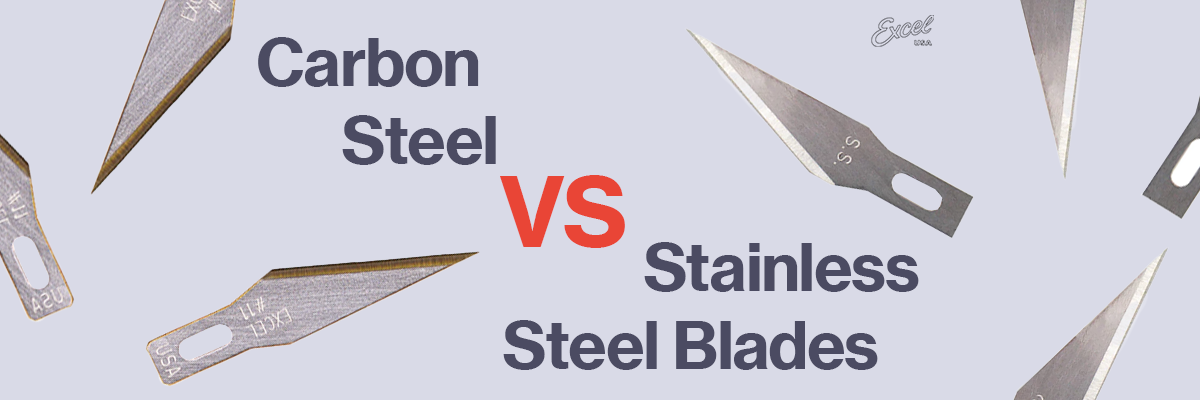
Carbon Steel vs. Stainless Steel Blades – Which Is Right for You?
The material composition of your precision blade can dramatically influence performance, longevity, and maintenance. Carbon steel and stainless steel are two of the most common types of blade materials, each with distinct advantages and challenges. This in-depth comparison will help you understand which type of steel is best suited for your specific needs and work environment.
Material Composition and Alloying Elements
Carbon steel is primarily composed of iron and carbon, with carbon content typically ranging from 0.05% to 2.1%. In contrast, stainless steel contains iron, carbon, and a minimum chromium content of 10.5%, which provides its signature corrosion resistance. Some stainless variants include nickel or molybdenum to further improve oxidation resistance and durability in extreme conditions.

Comparing Blade Performance and Sharpness
Carbon Steel Blades
- Advantages: Superior sharpness and ease of re-sharpening.
- Drawbacks: Prone to rust if not maintained properly; requires regular oiling and cleaning.
Thanks to its higher carbon content, carbon steel delivers a level of hardness and a sharp edge that professionals and hobbyists often prefer. It's a popular choice for tasks that demand clean, precise cuts. There are several types of carbon steel—low, medium carbon steel, and high-carbon—each offering different balances of strength, flexibility, and edge retention depending on the application.
Stainless Steel Blades
- Advantages: Excellent rust resistance and durability, especially in humid or wet conditions.
- Drawbacks: May be slightly less sharp out of the box and require more effort to re-sharpen.
Stainless steel blades are known for their resilience in moisture-prone environments, making them ideal for outdoor use or applications where frequent exposure to water is expected. While they may not hold as sharp an edge as carbon steel, their resistance to rust and minimal maintenance needs make them a reliable choice for long-term durability.
You May Also Watch: Excel Blades #11 Craft Blade
Durability and Maintenance Considerations
Maintenance for Carbon Steel
-
Regular cleaning and oiling are essential.
-
Best used in controlled, dry environments.
High-carbon steel is particularly susceptible to rust and discoloration without proper care. However, it offers excellent tensile strength, making it ideal for heavy cutting tasks where blade integrity matters.
Maintenance for Stainless Steel
-
Lower maintenance overall due to its corrosion-resistant properties.
-
Ideal for outdoor or industrial applications where exposure to moisture is common.
Strength, Hardness, and Toughness
Carbon steel typically has higher hardness and better edge retention but can be more brittle, especially in high-carbon forms. Stainless steel, while slightly softer, provides superior impact resistance and ductility, making it more forgiving in demanding or high-impact use cases.
Cost and Fabrication Considerations
Carbon steel is generally more affordable and easier to weld or machine, making it a go-to for fabrication-heavy projects. Stainless steel has a higher upfront cost but may offer long-term savings due to its lower maintenance requirements and durability in harsh environments.
Ideal Applications
DIY and Crafting
Carbon steel is often favored for precision tasks in controlled settings such as crafting, model making, or indoor DIY projects.
Heavy-Duty and Outdoor Use
Stainless steel is better suited for industrial or outdoor work where durability and rust resistance are critical.
Industry-Specific Use Cases
-
Construction & Automotive: Carbon steel is common in framing and structural parts due to its strength and workability.
-
Food & Medical: Stainless steel is preferred for kitchen knives and surgical tools due to hygiene and rust resistance.
-
Construction & Outdoor Equipment: Stainless steel is ideal where long-term corrosion resistance is critical.
So, Is Carbon Steel or Stainless Steel Better?
Both carbon steel and stainless steel blades offer unique benefits, and your choice should be driven by the specific demands of your projects. Consider the maintenance requirements, environment, and the level of precision needed when deciding between these two materials.
You May Also Watch: How to Replace #11 Blades